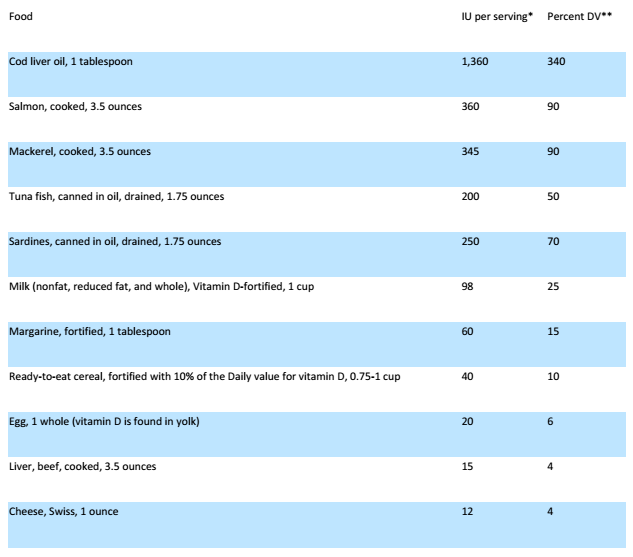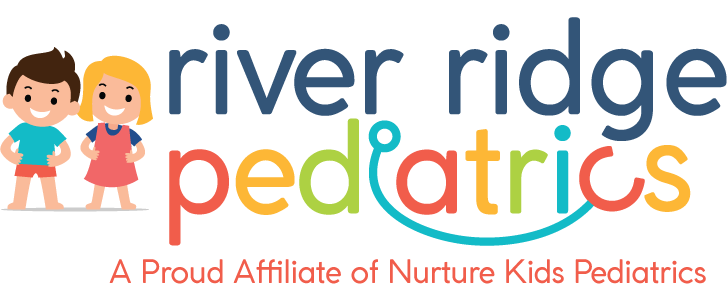Why Does My Child Need Vitamin D?
Why Does My Child Need Vitamin D?
 From the newborn to adolescent period, vitamin D is an essential part of a child’s health and development. This is why the American Academy of Pediatrics (AAP) recommends that all children should receive 400 IU of Vitamin D daily.
From the newborn to adolescent period, vitamin D is an essential part of a child’s health and development. This is why the American Academy of Pediatrics (AAP) recommends that all children should receive 400 IU of Vitamin D daily.
This breaks down into the following recommendations from the AAP:
• Breastfed and partially breastfed infants should be supplemented with 400 IU a day of vitamin D beginning in the first few days of life.
• For formula-fed babies, the requirements are the same, unless the child is drinking 32 ounces of infant formula per day.
• Adolescents who do not get 400 IU of vitamin D per day through foods should receive a supplement containing that amount.
• Children with increased risk of vitamin D deficiency, such as those taking certain medications and with chronic diseases such as cystic fibrosis, may need higher doses of vitamin D.
The body only needs small amounts of vitamins, and in a balanced diet they are usually present in sufficient quantities, which is why during middle childhood, vitamin supplements are rarely needed.
So, why exactly is Vitamin D recommended?
Vitamin D helps to promote tooth formation and regulates the absorption of calcium and phosphorus minerals which are essential for bone development. Vitamin D deficiency can lead to a bone-softening disease in young children named rickets, and those most at risk for the disease are exclusively breastfed infants not receiving their 400 IU of Vitamin D a day. Vitamin D deficiency might also help contribute to the development of osteoporosis later in life. But beware, giving your children larger amounts of Vitamin D, does not equate to better bone and tooth formation and can potentially be toxic for your child; therefore, always consult with your pediatrician first about your child’s supplemental requirements.
How does my child get the Vitamin D he or she needs?
One of the most well-known sources? Sunlight. Sunlight contributes to dietary sources of vitamin D by stimulating the conversion of a naturally occurring compound in the skin to an active form of the vitamin. For prolonged periods of sun exposure during the peak hours of 10a-4p, we still recommend protection with sunblock; but for shorter times out in the sun, such as for a nice stroll around the block with the family, take advantage to soak up some Vitamin D.
Vitamin D is also found naturally, but only in a few foods — they include oily fish, beef liver, cheese, egg yolks, and some mushrooms. Other foods are fortified with vitamin D such as milk, cereal, yogurt, and margarine. Some fruit juices are now fortified and provide a good source of calcium also; so when choosing an orange juice, for example, choose one fortified with calcium. Some vegetables, such as broccoli and spinach, also contain modest amounts of calcium. For children not receiving a well-balanced diet or one with many Vitamin D sources, a general multivitamin will often contain the sufficient daily dietary need.
For infants, liquid Vitamin D preparations are available (eg, D-Vi-Sol). As stated beforehand, supplementation with this should begin shortly after birth for exclusively breastfed infants or formula-fed infants receiving less than 32oz of formula per day.
Inquire about your child’s vitamin D requirements at his or her next well check or about this and other newborn essentials during a prenatal visit with us. Also, for more information about this and much more, we recommend searching www.healthychildren.org, a website for families supported by the AAP. Much of this information and the following table were obtained from this site.
Here’s a look at some food sources of Vitamin D:

Foods that contain Vitamin D.

 Previous Post
Previous Post



